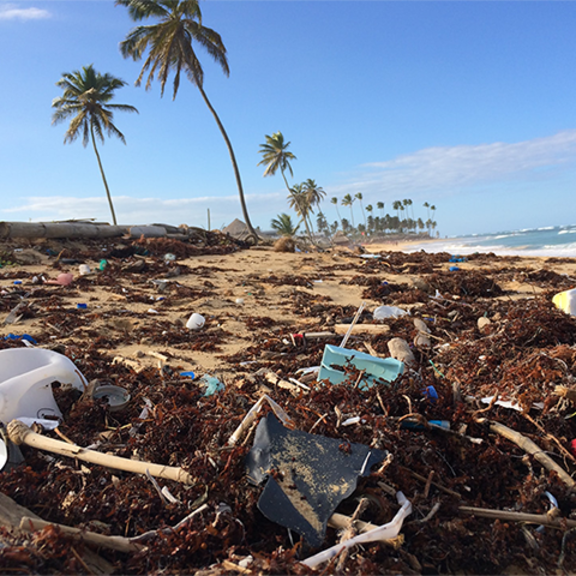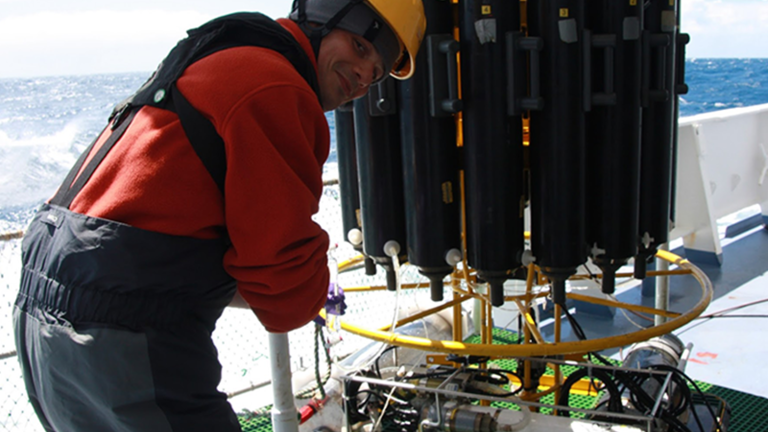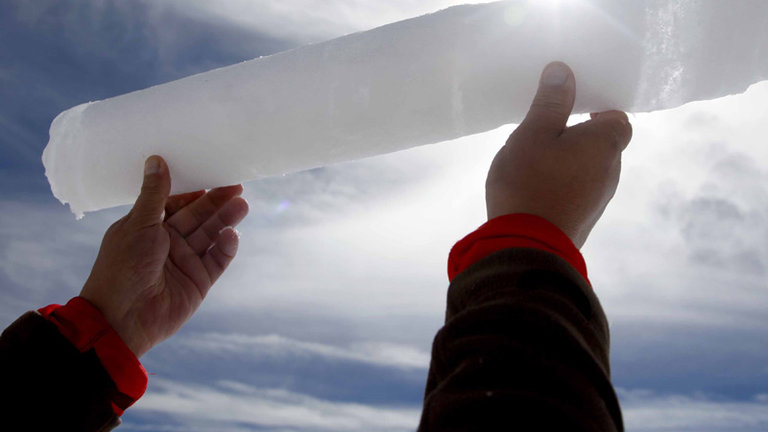Atmospheric plastic pollution: what do we know about it?
Understanding whether plastic is being spread through atmospheric channels
The world's plastic pollution is a global threat to the environment, but what about its presence in the atmosphere? The French Interactions Moléculaires et Réactivité Chimique et Photochimique1 laboratory and the Institut de Chimie de Clermont-Ferrand2, under the supervision of the CNRS3, and the association Expédition 7e Continent are combining their expertise to answer this question. Their objective: to gain a better understanding of the impacts of this atmospheric pollution on ecosystems and human health.
Plastic pollution
Plastic production has been rising exponentially since its industrialization in the 1950s. However, a large proportion of plastic is used to design objects with a short lifespan, and very little has been done to address how these objects are to be managed at the end of their life. Several recent studies have shown that the entire planet is affected by plastic pollution.
Once in the environment, plastic debris lingers on. It fragments and erodes under the effect of solar radiation and mechanical constraints, forming nanoscale particles. The presence of these microscopic particles is worrying because they interact with organisms at the bottom of the food chain.
8 billion tons of plastic produced in the world since 1950
80% of this waste is in landfills or in the environment
Atmospheric transport of plastic
The presence of plastic in environments remote from human activities suggests that plastic may be present in the atmosphere and transported over long distances. The team of researchers led by Alexandra Ter Halle, from the Interactions Moléculaires et Réactivité Chimique et Photochimique laboratory (IMRCP) has developed a new and innovative, multi-dimensional analysis approach for the:
-
detection,
-
quantification and
-
physico-chemical characterization of plastic particles.
In parallel, the Institut de Chimie de Clermont Ferrand (ICCF) is developing atmospheric sampling methods and characterizing the soluble plastic byproducts present in the air.
These analyses are performed on samples collected:
1. At the summit of the Puy de Dôme volcano (Auvergne - Central France): precipitation (rain, snow), aerosols and clouds.
The Cézeaux-Opme-Puy de Dôme network of atmospheric observatories of the Observatoire de Physique de Globe de Clermont-Ferrand (OPGC) is internationally recognized for its research on aerosols and greenhouse gases.
Laboratoire des Interactions Moléculaires et Réactivité Chimique et Photochimique
2. In the Mediterranean Sea: sea water, aerosols.
Objective: to find out whether the ocean's plastic accumulation zones are contributing to the atmospheric transport of plastic.
The samples are collected aboard the research vessel Expédition 7e Continent.
Expédition 7e Continent
How the Air Liquide Foundation is participating
The Air Liquide Foundation is contributing to the research work by funding analysis equipment and the salaries of members of the research team.
2. Institute of Chemistry of Clermont-Ferrand (Central France)
3. The French National Centre for Scientific Research


